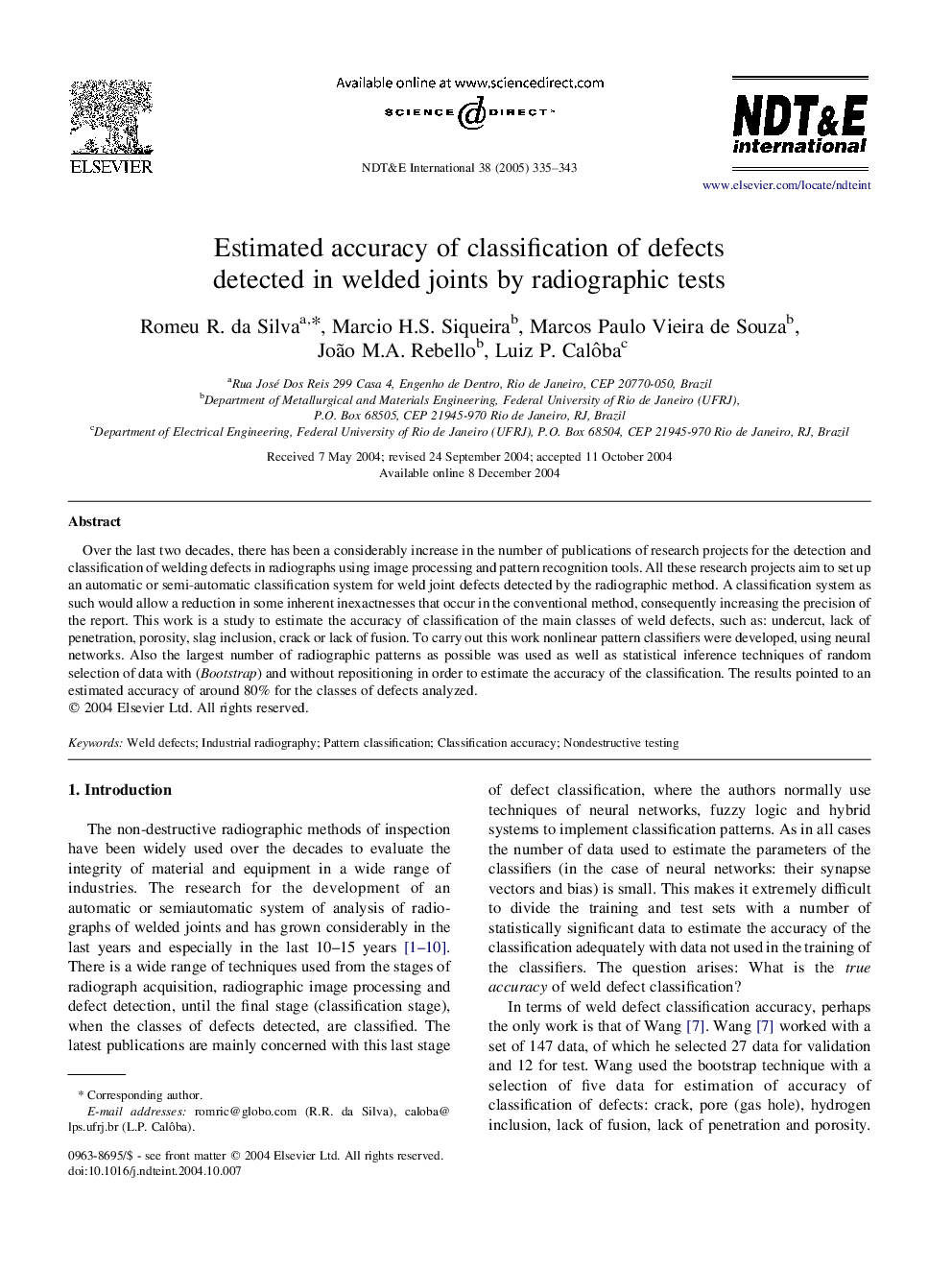| Article ID | Journal | Published Year | Pages | File Type |
|---|---|---|---|---|
| 10292905 | NDT & E International | 2005 | 9 Pages |
Abstract
Over the last two decades, there has been a considerably increase in the number of publications of research projects for the detection and classification of welding defects in radiographs using image processing and pattern recognition tools. All these research projects aim to set up an automatic or semi-automatic classification system for weld joint defects detected by the radiographic method. A classification system as such would allow a reduction in some inherent inexactnesses that occur in the conventional method, consequently increasing the precision of the report. This work is a study to estimate the accuracy of classification of the main classes of weld defects, such as: undercut, lack of penetration, porosity, slag inclusion, crack or lack of fusion. To carry out this work nonlinear pattern classifiers were developed, using neural networks. Also the largest number of radiographic patterns as possible was used as well as statistical inference techniques of random selection of data with (Bootstrap) and without repositioning in order to estimate the accuracy of the classification. The results pointed to an estimated accuracy of around 80% for the classes of defects analyzed.
Related Topics
Physical Sciences and Engineering
Engineering
Civil and Structural Engineering
Authors
Romeu R. da Silva, Marcio H.S. Siqueira, Marcos Paulo Vieira de Souza, João M.A. Rebello, Luiz P. Calôba,
